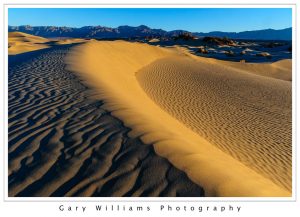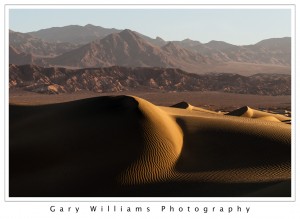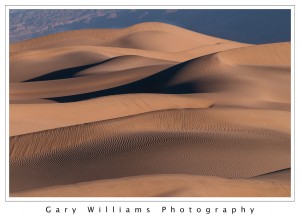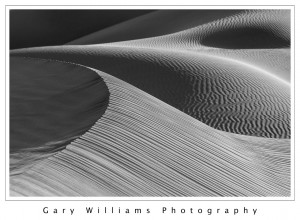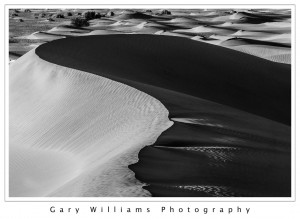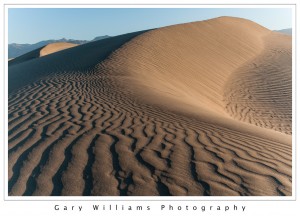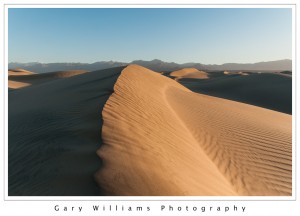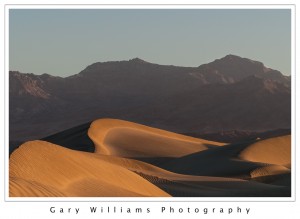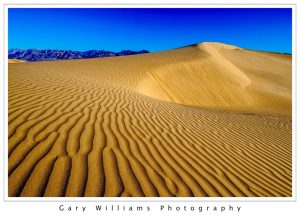 There is only a brief window of time, at sunrise, when the low angled light adds shadows to the ripples in the dunes. As soon as the sun has risen much above the horizon, the light becomes harsh and the contrast disappears. January 16, 2009.
There is only a brief window of time, at sunrise, when the low angled light adds shadows to the ripples in the dunes. As soon as the sun has risen much above the horizon, the light becomes harsh and the contrast disappears. January 16, 2009.
Sand Dunes
20
May 13
Death Valley 2013–Mesquite Flats Sand Dunes 1
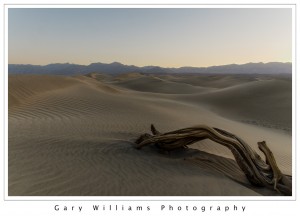 The Mesquite Flats sand dunes are near Stovepipe Wells in Death Valley and are easy to access from the road. Because they are easy to access, it is a chore to find dunes without footprints. Powerful winds can sometimes quickly erase footprints, but more often they cover the closest dunes. The solution is to be willing to walk farther than anyone else.
The Mesquite Flats sand dunes are near Stovepipe Wells in Death Valley and are easy to access from the road. Because they are easy to access, it is a chore to find dunes without footprints. Powerful winds can sometimes quickly erase footprints, but more often they cover the closest dunes. The solution is to be willing to walk farther than anyone else.
